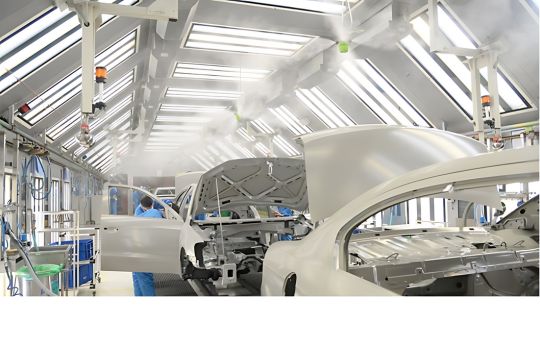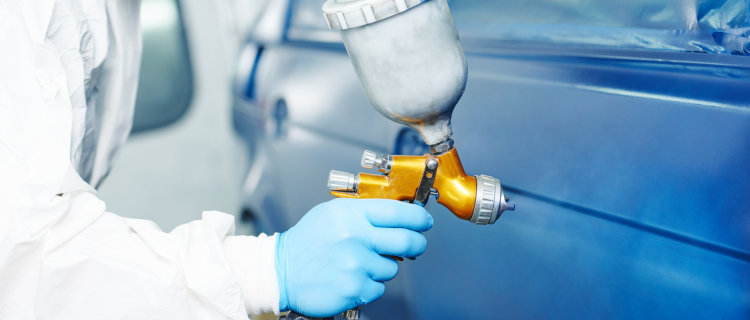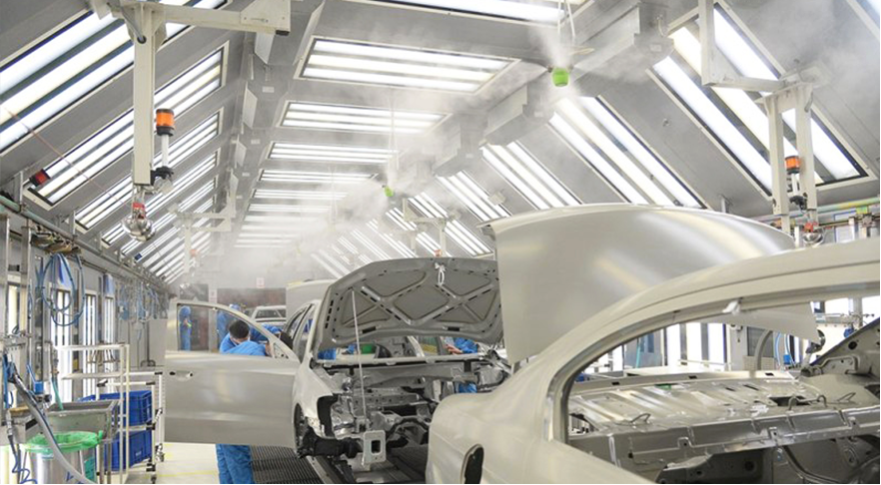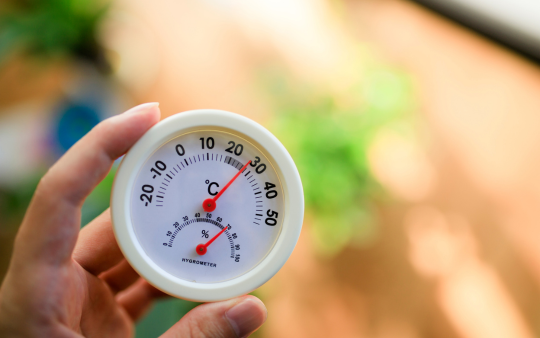
Article by Industry: Automotive | Controlled Environment Manufacturing | Dry Fog Dust Suppression


In automotive manufacturing, the paint booth is one of the most critical environments for ensuring a high-quality finish on car bodies. The role of humidity in this process cannot be overstated—it affects everything from paint application to drying time and the overall consistency of the finish.
Uncontrolled or fluctuating humidity can result in issues like uneven paint distribution, static build-up, and contamination. These defects not only impact product quality but also increase production costs through rework and delays. Let’s explore why controlled humidity is essential and how advanced humidification methods, such as Dry Fog technology, offer unique benefits in this application.

Humidity plays a pivotal role in maintaining the right conditions for paint application and curing. The ideal relative humidity (RH) for most automotive paint booths typically ranges from 50% to 70%. Here’s why maintaining this range is so important:
Historically, paint booths relied on systems like steam humidifiers or basic mist sprayers to control humidity. While these methods can be effective, they often present challenges such as high energy use, condensation, and uneven humidity distribution.
Modern advancements like Dry Fog technology provides an alternative approach, addressing many of these shortcomings:
Dry Fog systems produce extremely small water droplets (average size <10 microns) that remain suspended in the air without wetting surfaces. This ensures an even distribution of humidity throughout the paint booth.
By maintaining optimal humidity levels, Dry Fog systems naturally suppress dust by making airborne particles too heavy to remain suspended. This ensures that car bodies remain clean during painting, reducing contamination-related defects.
Unlike traditional mist systems, Dry Fog technology eliminates the risk of condensation or water pooling. This non-wetting property is especially important for maintaining clean, uncontaminated surfaces.
Dry Fog systems use compressed air instead of steam, significantly reducing energy consumption. This makes them both cost-effective and environmentally friendly.
By maintaining optimal humidity, Dry Fog systems reduce the risk of static electricity, helping to keep dust and other particles off freshly painted surfaces.
In one automotive manufacturing facility, fluctuating humidity levels in their paint booth were causing frequent defects and delays. After transitioning to a Dry Fog humidification system, they observed:
Controlling humidity in automotive paint booths is about more than just maintaining an ideal environment—it’s about ensuring product quality, operational efficiency, and cost savings. The inclusion of advanced technologies like Dry Fog not only meets these needs but also brings added benefits such as dust suppression, non-wetting humidification, and energy efficiency.
By investing in modern solutions, manufacturers can create a paint booth environment that minimizes defects and maximizes productivity. For operations striving for excellence, embracing these innovations is a step toward consistently achieving superior results.


Article by Industry: Automotive | Controlled Environment Manufacturing | Dry Fog Dust Suppression

Energy Efficiency with Humidification | Industrial Energy Savings | Sustainable Industrial Practices | Optimize Energy Use

Optimal Humidity Levels For Each Industry | Diverse Industries, One Solution | Maximum Efficiency with Dry Fog